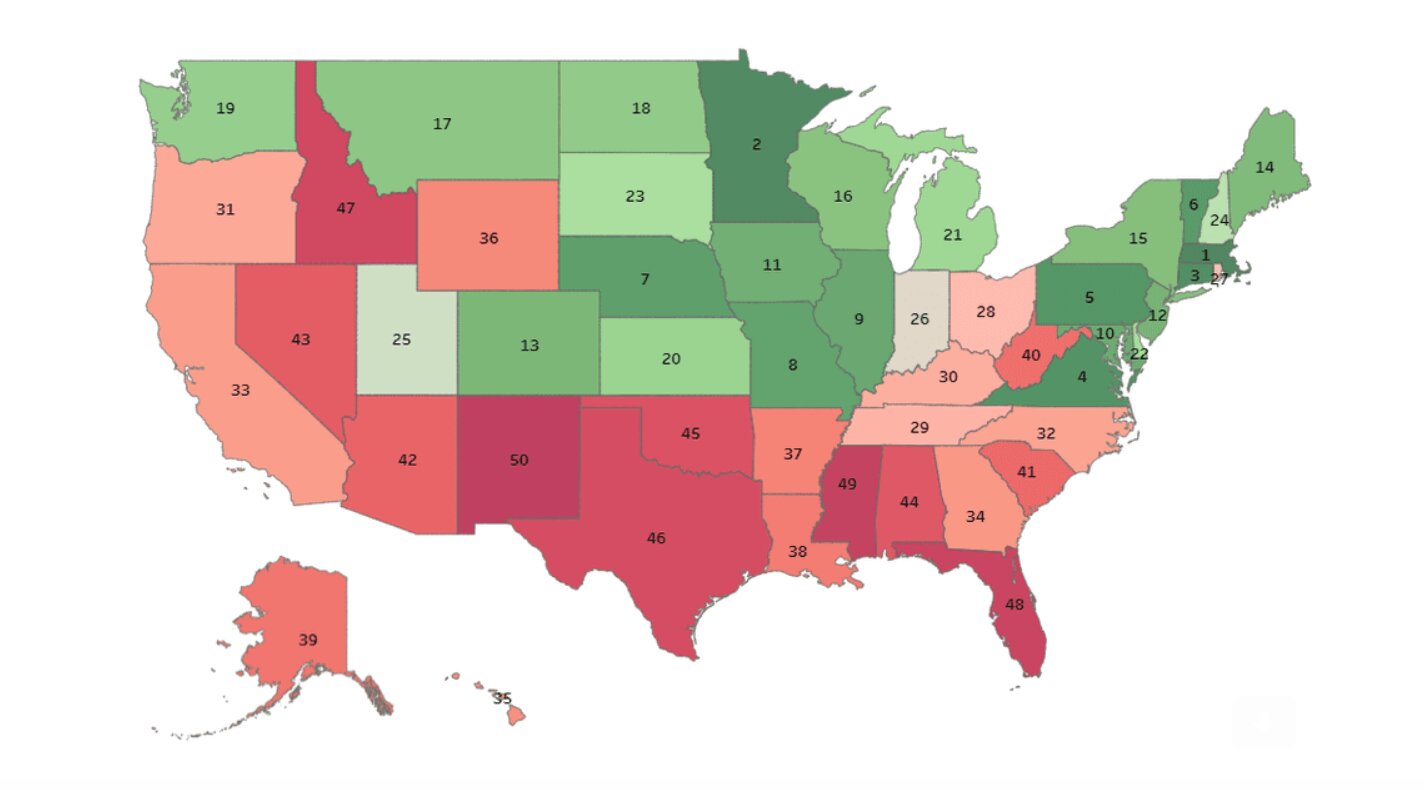Recognizing the significance of education is crucial, not only for creating additional opportunities and securing a comfortable future but also for fostering a robust and prosperous economy. In the United States, individuals with university degrees generally earn approximately $26,000 more annually than those who have only completed high school.
Scholaroo’s data team embarked on a quest to identify the states with the highest levels of education in the country. Their analysis focused on two key elements: the number of individuals who successfully completed their studies and the quality of educational institutions. Additional details were examined to provide a comprehensive overview.
Also read: States with Best & Worst Public School Systems
This report unveils compelling insights into the states boasting the most educated populace and the top-notch educational institutions. Consider it a guide to pinpoint regions where individuals excel in reading and learning. To get started, simply interact with the map provided below!
Rankings of Most & Least Educated States
Category Breakdown
Methodology
In order to determine the most and least educated states in America, Scholaroo compared the 50 states across two key dimensions:
- Educational Attainment
- School Quality
We evaluated those dimensions using 19 relevant metrics, which are listed below with their corresponding weight. Each metric was graded on a 100 point scale, with a score of 100 being the max.
Finally, we determined each state’s weighted average across all metrics to calculate its overall score and used the resulting scores to rank-order our sample.
Educational Attainment (50 points)
Share of Apprenticeships: Regular Weight (7.69 points)
Note: This metric measures the number of apprenticeships per 100k people.
Share of Partial College Experience: Half Weight (3.85 points)
Note: This metric measures the percentage of adults with partial college experience.
Share of Master Program Graduates: Double Weight (15.38 points)
Note: This metric measures the percentage of the population of adults with a Master’s Degree.
Share of Doctoral Program Graduates: Double Weight (15.38 points)
Note: This metric measures the percentage of the population of adults with a Doctoral or Professional Degree.
Literacy Rate: Half Weight (3.85 points)
Note: This metric measures the percentage of adults who scored a Level 3 or more in the U.S. PIAAC Literacy Proficiency. Adults at this level can understand, interpret, and synthesize information across multiple, complex texts.
Numeracy Rate: Half Weight (3.85 points)
Note: This metric measures the percentage of adults who scored a Level 3 or more in the U.S. PIAAC Numeracy Proficiency. Adults at this level can be considered proficient at working with mathematical information and ideas.
School Quality (50 points)
Best & Worst School Systems: Double Weight (8.33 points)
Note: This metric is based on Scholaroo’s Student Success Ranking.
Share of Top Universities per State: Half Weight (2.08 points)
Note: This metric measures the percentage of presence of Colleges/Universities in the top 500 America’s Top Colleges List by Forbes.
High School Graduation Rate: Regular Weight (4.17 points)
Note: This metric measures the rate of High School graduation.
College Graduation Rate: Regular Weight (4.17 points)
Note: This metric measures the rate of undergrads who graduated within 6 years.
College-Going Rates: Regular Weight (4.17 points)
Note: This metric measures the percentage of High School graduates going directly to College.
Number of Colleges/Universities: Half Weight (2.08 points)
Note: This metric measures the number of Colleges/Universities per 100k adults.
SAT Scores: Double Weight (15.38 points)
Note: This metric measures the average SAT score of High School Seniors.
ACT Scores: Double Weight (15.38 points)
Note: This metric measures the average ACT score of High School Seniors.
AP Exam Scores: Regular Weight (4.17 points)
Note: This metric measures the percentage of students scoring a 3 or higher on an AP exam.
High-School Financial Literacy Grade: Half Weight (2.08 points)
Note: This metric represents the Financial Literacy score of High School students.
Health Literacy: Half Weight (2.08 points)
Note: This metric represents the median in the Health IQ Score.






